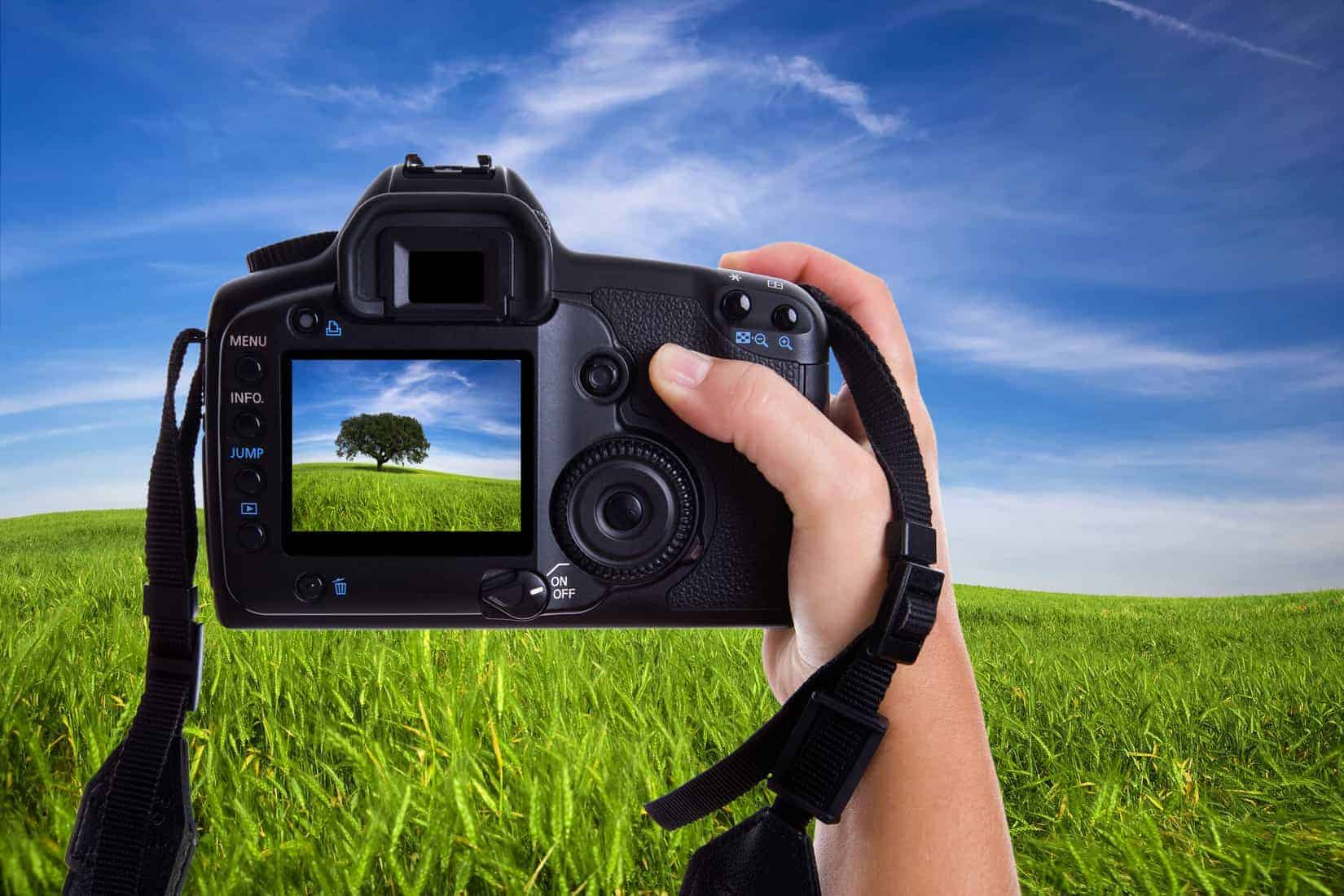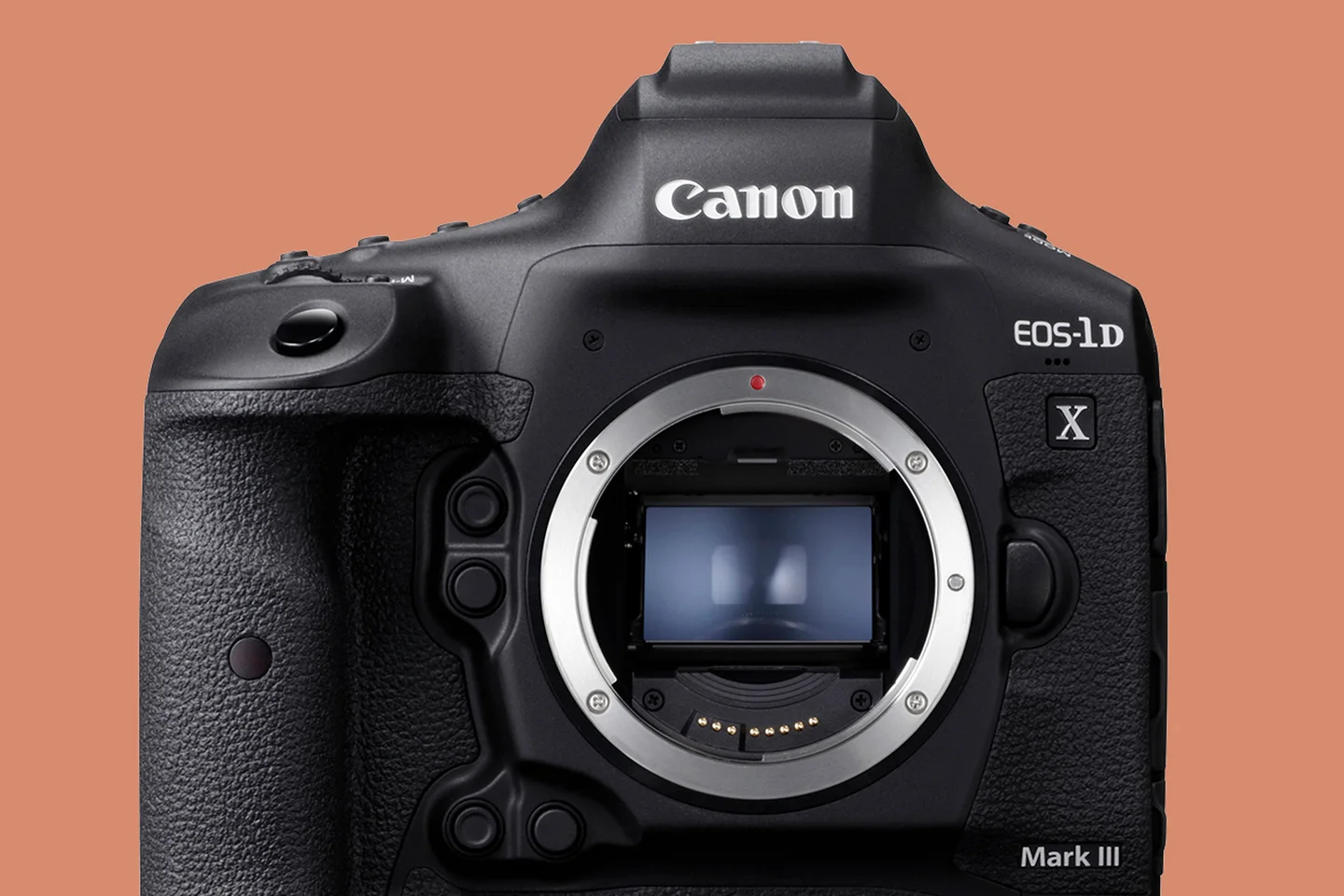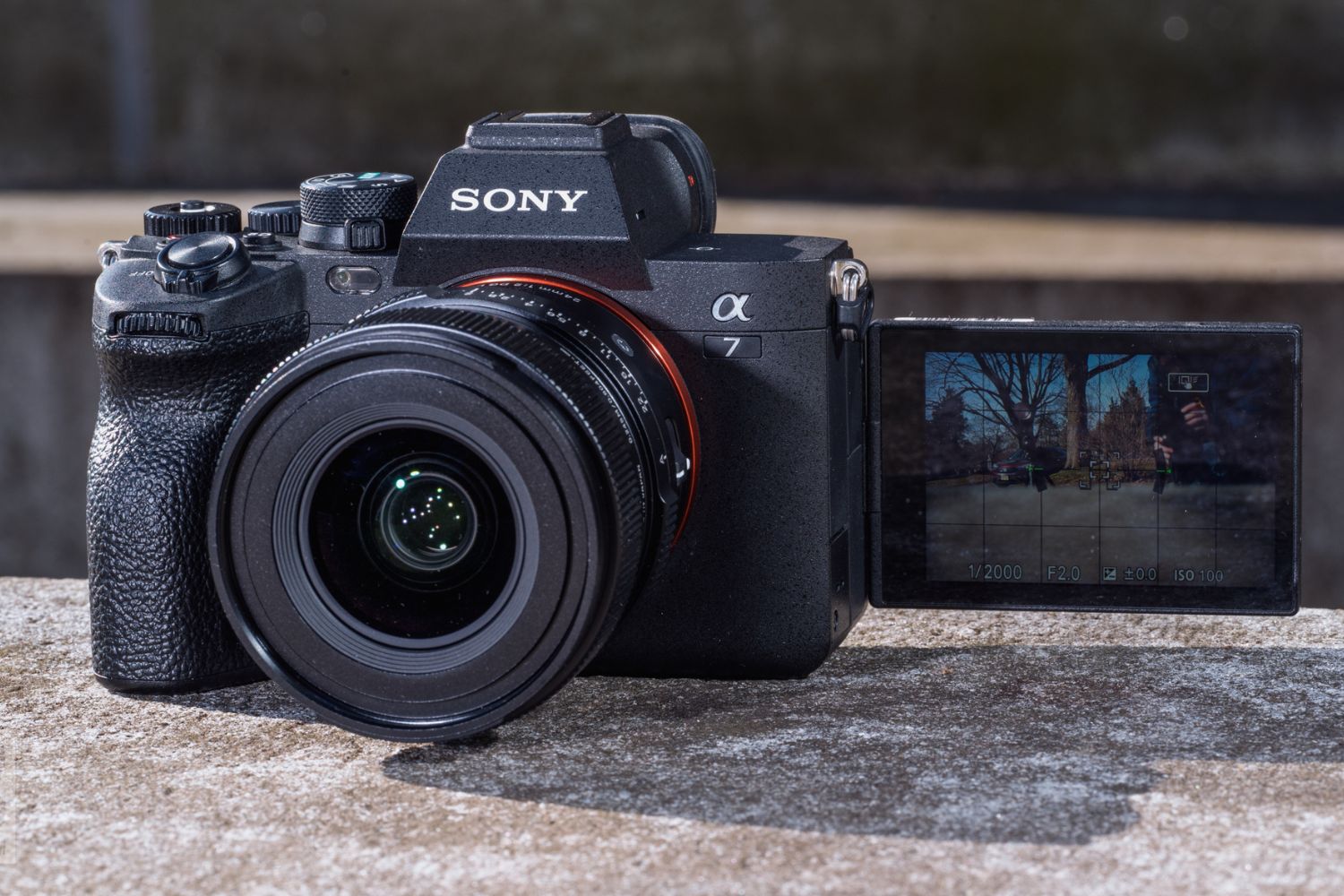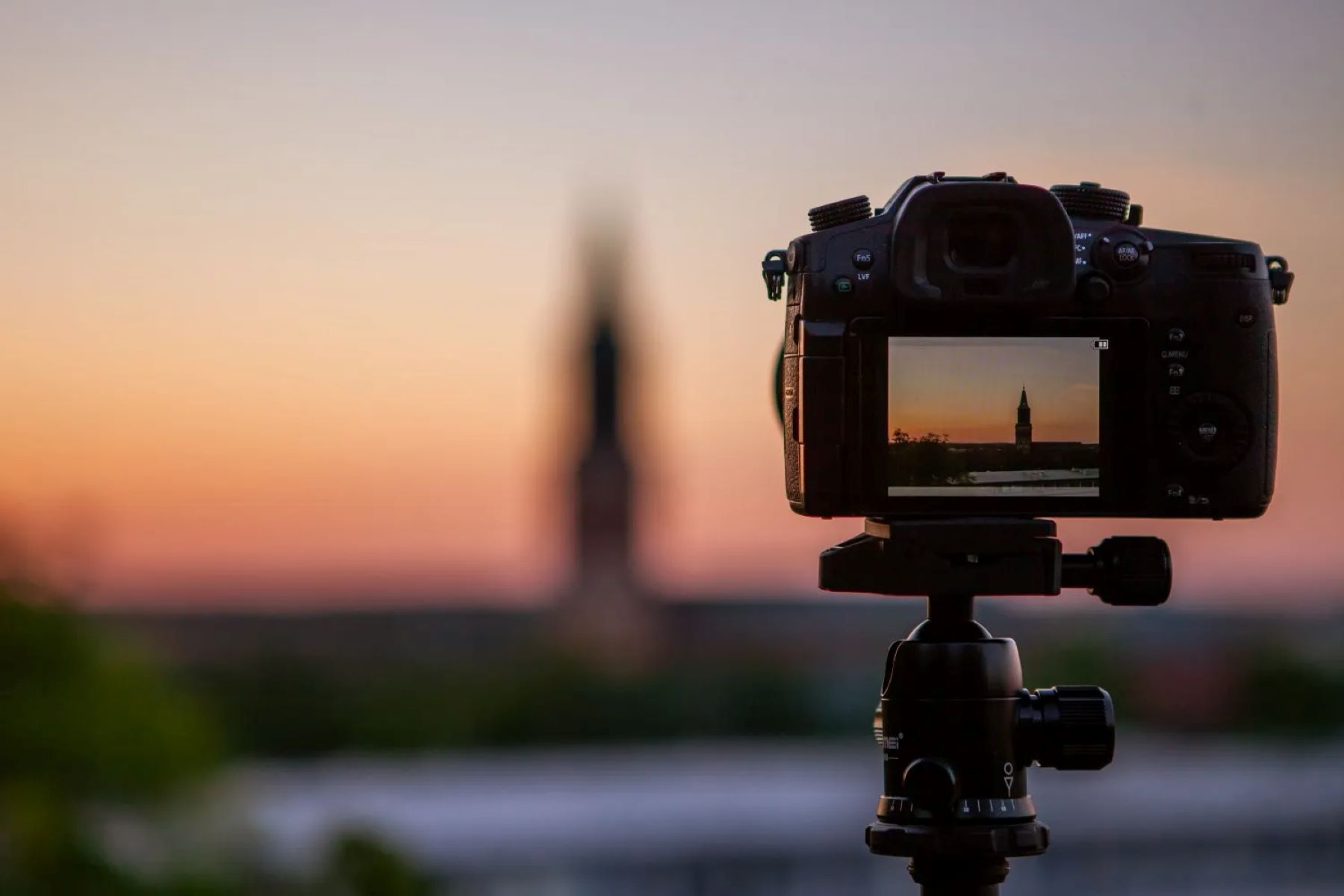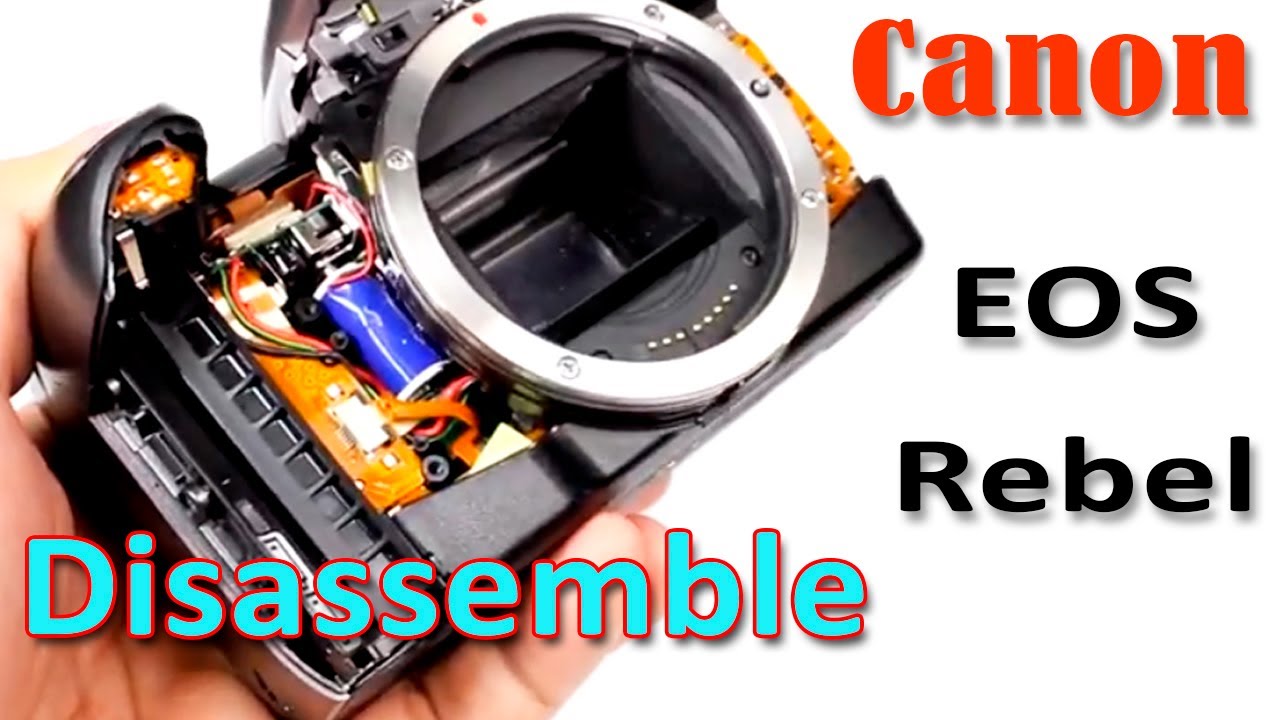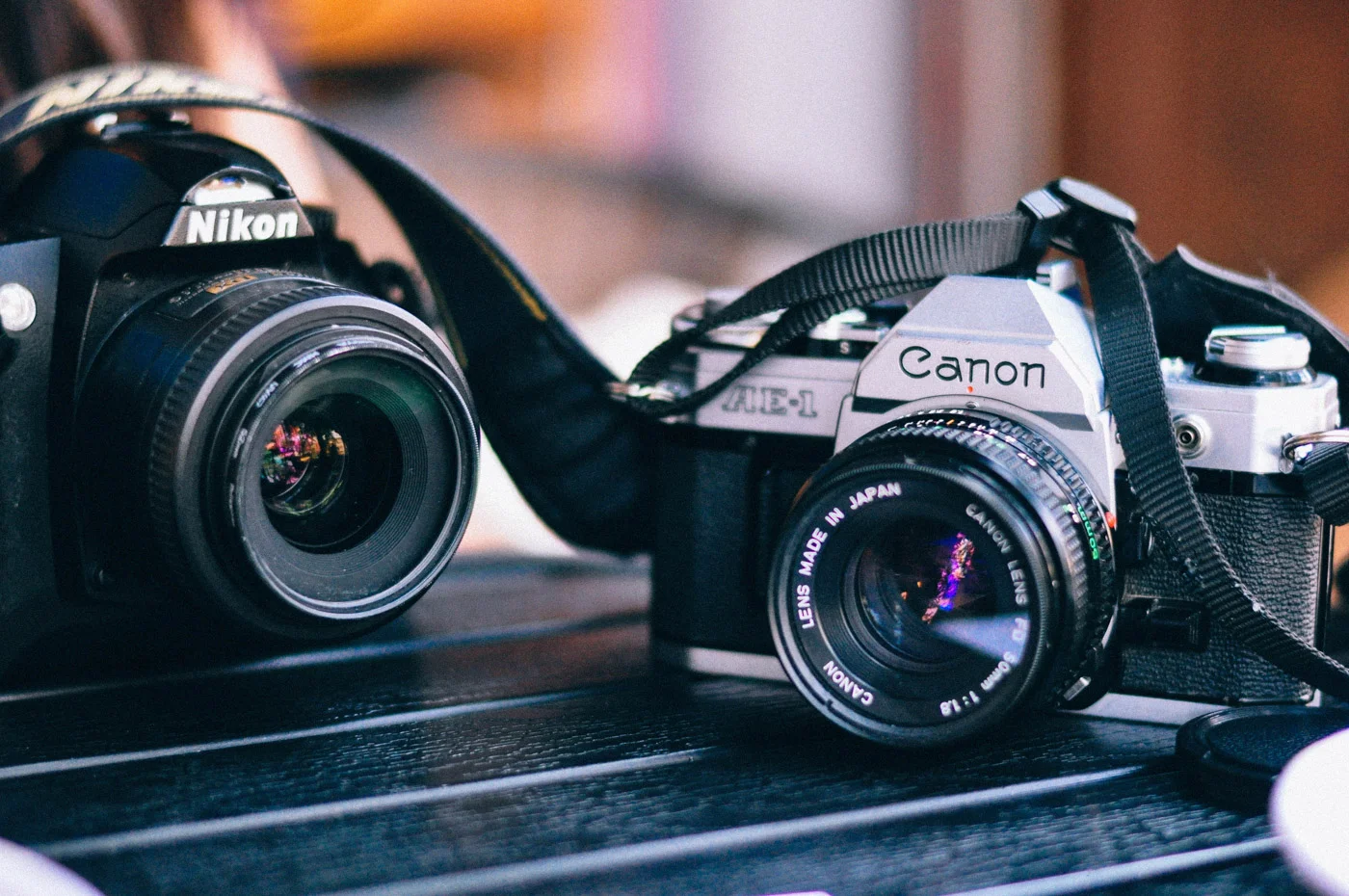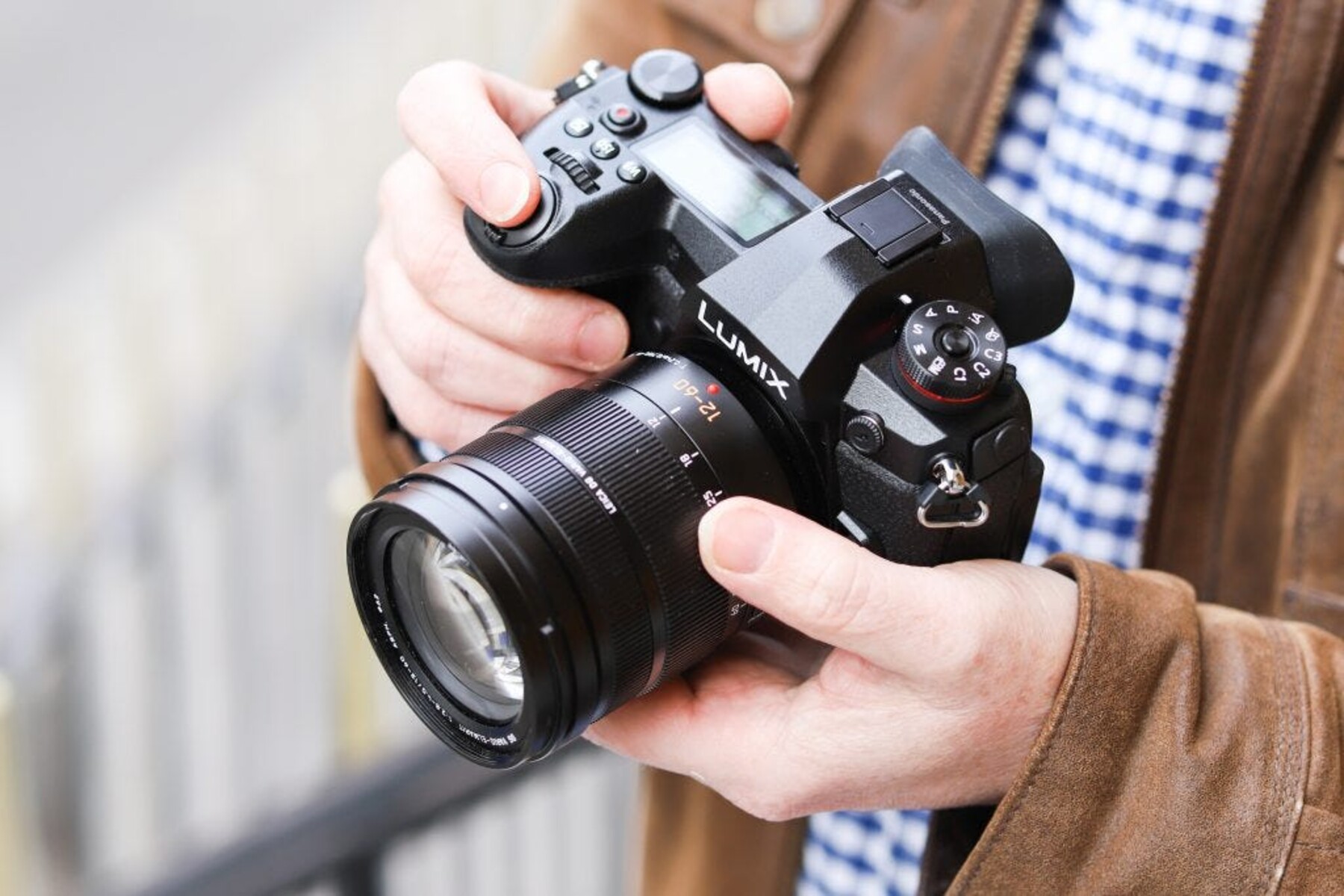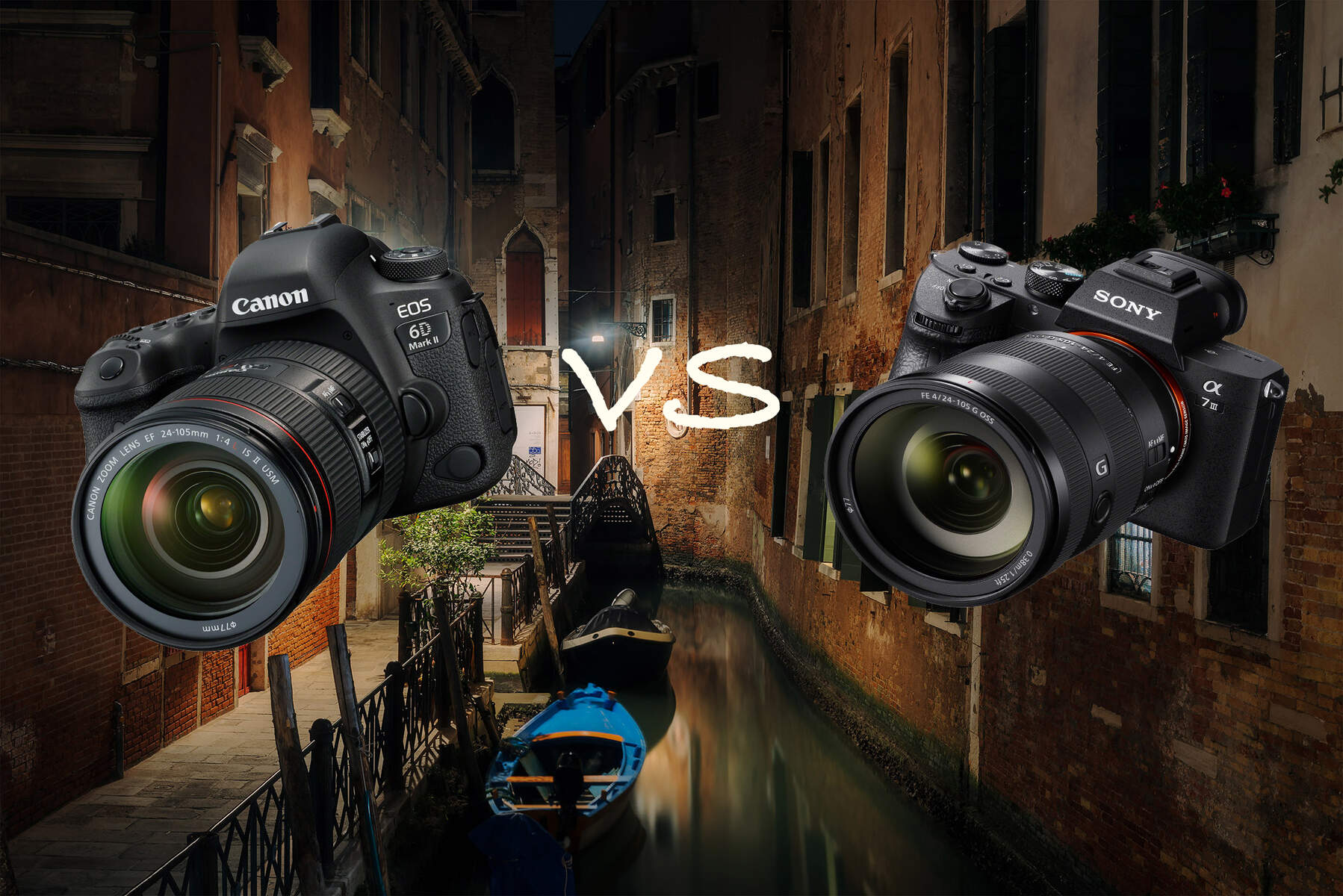Introduction
Welcome to the world of digital photography, where capturing moments and preserving memories has never been easier. When it comes to using a digital camera, there are several components that work together to create the perfect shot. One such component is the viewfinder. Whether you’re a seasoned photographer or a beginner, understanding what a viewfinder is and how it can enhance your photography skills is essential.
A viewfinder is a small window or display on a camera that allows you to see the image you are capturing. It acts as a framing tool, helping you compose the shot and ensure that your subject is in focus. While in the past, film cameras had a physical viewfinder, modern digital cameras offer different types of viewfinders, each with its own advantages and disadvantages.
Having a clear understanding of the different types of viewfinders is essential when choosing a digital camera. Additionally, knowing how to make the most of the viewfinder will improve your photography skills and result in better images.
In this article, we will explore the different types of viewfinders available in digital cameras, discuss their advantages and disadvantages, and provide you with some useful tips to optimize your photography experience.
What Is a Viewfinder?
A viewfinder is an essential component of a digital camera that allows photographers to compose their shots and preview the image before capturing it. It acts as a tool for framing the subject and ensuring that it is in focus. Essentially, the viewfinder provides a visual representation of what the camera’s lens sees.
In simple terms, the viewfinder is like a miniature window through which photographers can preview their subject and the surrounding scene. It helps them determine the best angle, adjust the composition, and make any necessary adjustments to achieve the desired image.
In the early days of photography, film cameras relied on optical viewfinders. These were physical windows located on top of the camera body that provided a direct view of the scene through the lens. However, with the advent of digital technology, new types of viewfinders have emerged, including electronic and hybrid viewfinders.
Regardless of the type, the primary purpose of a viewfinder remains the same: to offer photographers a real-time visual representation of the scene they are about to capture. This allows them to make informed decisions about composition, exposure, and focus, resulting in more accurate and desirable photographs.
It’s important to note that some modern digital cameras feature a rear LCD screen that functions as a live viewfinder. While this screen can be convenient for certain situations, such as distant or low-angle shots, using the LCD screen for extended periods can drain the camera’s battery. Additionally, using the LCD screen under bright sunlight can be challenging due to glare.
Types of Viewfinders
There are three main types of viewfinders commonly found in digital cameras: optical viewfinders, electronic viewfinders, and hybrid viewfinders. Let’s explore each type in more detail:
1. Optical Viewfinder
An optical viewfinder (OVF) is a traditional type of viewfinder that has been used in cameras for decades. It uses a system of mirrors and lenses to reflect the image from the camera’s lens onto the viewfinder window. When you look through the optical viewfinder, you see a direct representation of what the camera’s lens sees.
One of the main advantages of an optical viewfinder is its clarity and responsiveness. Since it relies on reflecting light directly into your eye, there is no lag or delay in the image display. It also provides an accurate representation of the scene, making it easier to compose shots and track moving subjects.
However, one limitation of optical viewfinders is that they do not show the exact image that will be captured. This is because the viewfinder is not directly connected to the camera’s image sensor. As a result, certain elements like exposure, white balance, and other camera settings may not be accurately represented in the viewfinder image.
2. Electronic Viewfinder
An electronic viewfinder (EVF), also known as a digital viewfinder, is a newer type of viewfinder that utilizes an electronic display to show the image. Instead of relying on physical mirrors and lenses, an EVF uses an LCD or OLED screen to provide a digital representation of what the camera’s lens sees.
One of the major advantages of an electronic viewfinder is that it offers a real-time preview of the final image. Since it is directly connected to the camera’s image sensor, it accurately reflects exposure, white balance, and other camera settings. Additionally, an EVF allows you to see the effects of different settings and adjustments in real-time, making it easier to fine-tune your shots.
However, electronic viewfinders do have some drawbacks. The image displayed in an EVF can be affected by factors like low light, refresh rate limitations, and color accuracy. Additionally, there may be a slight lag between the image displayed in the viewfinder and the actual scene, although this delay is often minimal in modern digital cameras.
3. Hybrid Viewfinder
A hybrid viewfinder combines the advantages of both optical and electronic viewfinders. This type of viewfinder is primarily found in high-end digital cameras. It allows photographers to switch between an optical viewfinder and an electronic viewfinder, depending on their shooting preferences and needs.
The hybrid viewfinder typically features a transparent LCD overlay on top of the optical viewfinder. This overlay can display shooting information, gridlines, or other digital overlays while still providing a direct view of the scene through the optical viewfinder. By switching to the electronic mode, photographers can access additional information and a live preview of the final image.
Hybrid viewfinders provide flexibility and versatility by offering the benefits of both optical and electronic viewfinders. However, they are more commonly found in advanced DSLR or mirrorless cameras and may not be available in entry-level models.
Optical Viewfinder
The optical viewfinder (OVF) is a traditional type of viewfinder that has been widely used in cameras for many years. It employs a system of mirrors and lenses to reflect the image from the camera’s lens onto the viewfinder window. When you look through the optical viewfinder, you see a direct representation of what the camera’s lens sees.
One of the primary advantages of an optical viewfinder is its clarity and responsiveness. Since it relies on reflecting light directly into your eye, there is no noticeable lag or delay in the image display. This instantaneous feedback allows photographers to react quickly to changing scenes and capture decisive moments accurately.
Furthermore, optical viewfinders provide an accurate representation of the scene, making it easier to compose shots and track moving subjects. This is particularly useful in fast-paced situations such as sports or wildlife photography, where capturing a fleeting moment with precision is crucial.
Another advantage of an optical viewfinder is its efficiency in terms of power usage. Since it does not require a backlight or electronic components, using the optical viewfinder consumes minimal battery power. This is a significant advantage for photographers who spend extended periods in the field without access to electrical outlets or spare batteries.
However, it’s important to note that optical viewfinders have a limitation in terms of the view they provide. The image you see through an optical viewfinder may not be an exact representation of the final image that will be captured. This is because the viewfinder is not directly connected to the camera’s image sensor, which can lead to differences in exposure, white balance, and other camera settings.
Additionally, optical viewfinders do not offer the convenience of displaying shooting information or previewing the effects of different settings in real-time. Photographers relying solely on an optical viewfinder need to review the captured images on the camera’s LCD screen to evaluate exposure, focus, and other aspects of the photograph.
In summary, optical viewfinders offer a clear and responsive way of framing and capturing images. They are especially beneficial in situations where quick reactions and accurate composition are essential. While they may not provide an exact representation of the final image, their energy efficiency and immediacy make them an excellent choice for many photographers.
Electronic Viewfinder
The electronic viewfinder (EVF) is a type of viewfinder that has gained popularity with the advancement of digital camera technology. Unlike optical viewfinders, EVFs use an electronic display, such as an LCD or OLED screen, to provide a digital representation of the scene.
One of the major advantages of an electronic viewfinder is that it offers a real-time preview of the final image. Since it is directly connected to the camera’s image sensor, an EVF accurately reflects exposure, white balance, and other camera settings. This allows photographers to see the effects of different settings and adjustments in real-time, enabling them to make immediate and informed decisions about their shots.
Another advantage of an electronic viewfinder is the ability to display shooting information directly in the viewfinder. This can include vital details such as exposure settings, histogram, focus peaking, and grid lines. Having this information readily available eliminates the need to divert attention from the subject to review settings on the camera’s LCD screen.
An electronic viewfinder is particularly beneficial in challenging lighting conditions. Compared to an optical viewfinder, an EVF can compensate for low light situations by amplifying the captured image. It can also simulate different exposure settings, allowing photographers to preview the effect before capturing the shot.
However, electronic viewfinders do have some limitations. The quality of the EVF’s image can vary depending on the camera model and price range. Some lower-end EVFs may exhibit lower resolution, less accurate color reproduction, or noticeable lag between the displayed image and the actual scene. However, with technology advancements, modern high-end digital cameras now feature EVFs that offer exceptional image quality and minimal lag.
In addition, using an electronic viewfinder can consume more battery power compared to an optical viewfinder. The continuous display and power needed to operate an EVF may result in reduced battery life. It is important for photographers using an electronic viewfinder to carry extra batteries or have access to a reliable power source for extended shooting sessions.
Overall, electronic viewfinders provide photographers with a versatile and comprehensive tool for composing and previewing images. The real-time feedback, shooting information display, and adaptability to different lighting conditions make EVFs a valuable asset for both amateur and professional photographers.
Hybrid Viewfinder
The hybrid viewfinder is a type of viewfinder that combines the advantages of both optical and electronic viewfinders. It is commonly found in high-end digital cameras, where photographers have the option to switch between an optical viewfinder (OVF) and an electronic viewfinder (EVF) depending on their shooting preferences and needs.
The hybrid viewfinder typically features a transparent LCD overlay on top of the optical viewfinder. This overlay can display shooting information, gridlines, or other digital overlays while still providing a direct view of the scene through the optical viewfinder. By switching to the electronic mode, photographers can access additional information and a live preview of the final image.
One of the key advantages of a hybrid viewfinder is its versatility. It allows photographers to have the familiarity and directness of an optical viewfinder while having the added convenience of digital information and real-time preview. This flexibility is particularly useful when shooting in challenging lighting conditions, as the digital overlay can assist in achieving accurate exposure and focus.
Moreover, the hybrid viewfinder allows photographers to maintain a strong connection with the scene and subject while still having access to crucial shooting information. This is especially important in fast-paced shooting scenarios where capturing the decisive moment requires immediate action and minimal distraction.
However, it is important to note that hybrid viewfinders are typically found in advanced DSLR or mirrorless cameras and may not be available in entry-level or budget-friendly models. They tend to add complexity and cost to the camera, making them more suitable for photographers who prioritize flexibility and advanced features.
Furthermore, the quality of the electronic overlay in a hybrid viewfinder can vary depending on the camera model. Some may have higher resolution, better color accuracy, and minimal lag, while others may exhibit limitations in these aspects. It is advisable to test and compare different camera models to ensure that the hybrid viewfinder meets your specific needs and preferences.
In summary, the hybrid viewfinder offers the best of both optical and electronic viewfinders, providing photographers with enhanced functionality and flexibility. It combines the clear and direct view of an optical viewfinder with the digital overlays and real-time preview of an electronic viewfinder, making it an ideal choice for photographers who value versatility and advanced shooting features.
Advantages of Using a Viewfinder
Using a viewfinder, whether it is an optical viewfinder (OVF), electronic viewfinder (EVF), or hybrid viewfinder, offers several advantages for photographers. Here are some key benefits of using a viewfinder:
1. Accurate Composition
A viewfinder allows you to accurately compose your shots. By looking through the viewfinder, you can precisely frame your subject and ensure that it is placed where you want it within the frame. This helps create well-composed images and eliminates the guesswork that comes with using a live view or relying solely on the camera’s LCD screen.
2. Enhanced Visibility
In bright sunlight or other challenging lighting conditions, using a viewfinder can greatly improve visibility. By blocking out ambient light, the viewfinder allows you to see the image more clearly, making it easier to assess the exposure, focus, and other critical elements of the shot. This is particularly beneficial when shooting in outdoor environments or in situations where glare on the LCD screen can hinder your ability to accurately review the image.
3. Stability and Focus Control
When using a viewfinder, you can hold the camera more securely against your face, providing stability and reducing camera shake. This leads to sharper images, especially when shooting with longer focal lengths or in low-light conditions. Additionally, using a viewfinder allows for precise control over focus, enabling you to ensure that your subject is sharp and in focus.
4. Better Connection with the Subject
A viewfinder offers a more immersive shooting experience by allowing you to block out distractions and focus solely on the subject. By bringing the camera to your eye, you establish a direct connection with the scene, enabling you to better anticipate moments and capture them at the right time. This can be particularly advantageous in street photography, sports, and wildlife photography, where timing and capturing the decisive moment are essential.
5. Conserves Battery Life
Using a viewfinder, especially an optical viewfinder, consumes less battery power compared to relying solely on the camera’s LCD screen. This is because viewfinders do not require continuous power to display the image. By conserving battery life, you can shoot for longer periods without the need for frequent recharging or carrying spare batteries.
Overall, using a viewfinder provides photographers with accurate composition, enhanced visibility, stability, better focus control, and a stronger connection with the subject. It also helps conserve battery power, ensuring that you can keep capturing photos without interruption. By utilizing the benefits of a viewfinder, you can elevate your photography skills and create compelling images.
Disadvantages of Using a Viewfinder
While viewfinders offer numerous advantages for photographers, they also come with a few disadvantages that should be considered. Here are some potential drawbacks of using a viewfinder:
1. Limited Perspectives
When using a viewfinder, you are confined to the perspective provided by the camera’s lens. This means that you may not always see the full extent of the scene or be able to capture wide-angle shots. Depending on the camera and viewfinder type, you might need to switch to the camera’s LCD screen or another shooting mode to achieve a wider field of view.
2. Tunnel Vision
Looking through a viewfinder can create a tunnel vision effect, as your focus is primarily on the subject and what is within the frame. This can lead to missing out on peripheral details or opportunities that might be happening outside the immediate view. It’s important to be mindful and periodically step back from the viewfinder to observe the broader environment and any potential compositional elements outside the frame.
3. Distance from the Subject
When using a traditional viewfinder, you position the camera at eye level, which creates a natural distance between yourself and the subject. This can affect the level of intimacy and connection you have with your subject, especially when compared to shooting from eye level with a camera held at arm’s length. In situations where building a rapport or capturing more candid moments is crucial, using the LCD screen or shooting from various angles may be more advantageous.
4. Limited Information Display
While some viewfinders, particularly electronic ones, can display shooting information, the amount of information displayed is often limited compared to the camera’s LCD screen. This means you might need to switch to the LCD screen or another shooting mode to access detailed settings, histograms, or other helpful information. However, some advanced camera models feature viewfinders with more comprehensive information display capabilities.
5. Eye Strain
Using a viewfinder for extended periods can cause eye strain and fatigue, especially if you have to squint or strain to see the image clearly. This can be particularly pronounced in low-light situations where the viewfinder image may appear dim. Taking breaks and looking away from the viewfinder periodically can help alleviate eye strain.
While these disadvantages should be considered, it’s important to note that they can be mitigated or outweighed by the advantages of using a viewfinder. Each photographer’s shooting style and preferences will influence the significance of these drawbacks. Ultimately, it is essential to weigh the pros and cons to determine the most suitable shooting approach for your specific photography needs.
Tips for Using a Viewfinder
Using a viewfinder effectively can enhance your photography experience and improve the quality of your images. Here are some essential tips to help you make the most out of using a viewfinder:
1. Keep Both Eyes Open
When using an optical viewfinder, try to keep both eyes open. This allows you to maintain better situational awareness and see any potential distractions or opportunities outside the frame. By keeping your non-dominant eye open, you can also reduce eye strain and maintain a more natural viewing experience.
2. Focus and Compose with Precision
Take advantage of the viewfinder’s ability to provide a clear and detailed view of your subject. Use the focusing aids, such as focus points or focus peaking, to ensure that your subject is sharp and in focus. Experiment with different compositions by adjusting your framing and positioning within the viewfinder to create visually pleasing and engaging images.
3. Utilize the Gridlines
Many viewfinders offer the option to display gridlines. These lines can help you align horizons, maintain level framing, and apply the rule of thirds to create a well-balanced composition. Use the gridlines as a guide to improve the overall visual appeal of your photographs.
4. Pay Attention to Exposure
Although viewfinders may not display the exact exposure settings, you can still use them to gauge the overall brightness of the scene. Look for any potential overexposed or underexposed areas and adjust your camera’s settings accordingly. This will help you achieve the desired exposure and reduce the need for extensive post-processing adjustments.
5. Practice Panning with Moving Subjects
If you are photographing subjects in motion, such as sports or wildlife, using a viewfinder can make it easier to track and pan with them. Focus on your subject and track their movement smoothly within the frame. This technique can lead to more dynamic and visually appealing images that effectively convey the sense of motion.
6. Review Histograms and Shooting Information
If your camera’s viewfinder includes the option to display shooting information or histograms, make it a habit to review them periodically. This allows you to assess exposure, highlight and shadow detail, and other crucial settings without having to take your eye off the viewfinder. Utilize this information to make on-the-spot adjustments and improve the overall quality of your images.
Remember to practice using the viewfinder regularly to become familiar with its features and maximize its potential. With time and experience, using a viewfinder will become second nature, enabling you to capture stunning images without hesitation or compromise.
Conclusion
A viewfinder is an essential tool in digital photography that offers numerous benefits for photographers of all levels. Whether you choose an optical viewfinder (OVF), electronic viewfinder (EVF), or hybrid viewfinder, each type provides its unique advantages and disadvantages, allowing photographers to select the most suitable option based on their shooting preferences and needs.
Using a viewfinder enhances your photography experience by allowing for accurate composition, enhanced visibility in challenging lighting conditions, stability, focus control, and a stronger connection with the subject. It provides a clear and immediate view of the scene, enabling you to anticipate moments and capture them at the right time. Additionally, viewfinders conserve battery life, making them ideal for long shooting sessions without the need for frequent recharging.
However, viewfinders also have limitations, such as limited perspectives, potential tunnel vision effect, a natural distance from the subject, limited information display, and possible eye strain with extended use. It’s important to consider these drawbacks in the context of your photographic style and shooting preferences.
To make the most out of using a viewfinder, remember to keep both eyes open, focus and compose with precision, utilize gridlines, pay attention to exposure, practice panning with moving subjects, and review histograms and shooting information when available. Regular practice and experimentation will help you become more proficient in using a viewfinder and harnessing its advantages.
Ultimately, choosing whether to use a viewfinder or rely solely on the camera’s LCD screen is a personal decision based on individual shooting styles and preferences. Understanding the capabilities and limitations of viewfinders will empower you to make informed choices and capture stunning images that reflect your unique perspective as a photographer.







